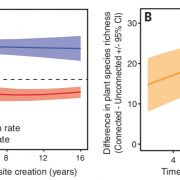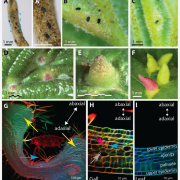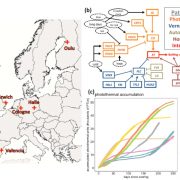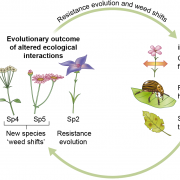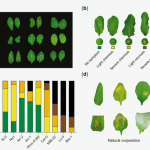Flowering plant composition shapes pathogen infection intensity and reproduction in bumble bee colonies (PNAS)
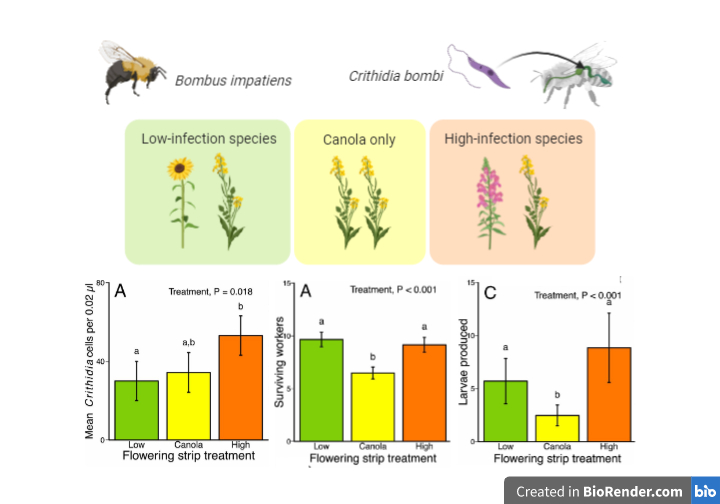 Pathogens are one of many factors underlying pollinator decline. Diseases can be transmitted from commercial honeybees to wild bees through flowers. Bumble bees (Bombus impatiens) are infected by the gut pathogen Crithidia bombi which is contracted at flowers by fecal-oral transmission. However, not all species of plants result in equal transmission of disease to bees, therefore Adler et al. sought to determine how species composition would affect pathogen infection and bumble bee colony fitness. They created tents of canola interspersed with flowering strips containing low- or high-infection plant species, or no strips, and spray inoculated C. bombi onto the plants before introducing the bees. Flowering strips containing high-infection species had double the infection intensity compared to low-infection. However, nectar availability, larva production, and worker survival were higher in both high- and low-infection plots compared to canola only, demonstrating the importance of flowering strips for bee health. This work can help inform planting pollinator friendly habitats to promote native been population while selecting plant species that minimize pathogen transmission. (Summary and image by Katy Dunning @PlantMomKaty) Proc. Natl. Acad. Sci. USA 10.1073/pnas.2000074117
Pathogens are one of many factors underlying pollinator decline. Diseases can be transmitted from commercial honeybees to wild bees through flowers. Bumble bees (Bombus impatiens) are infected by the gut pathogen Crithidia bombi which is contracted at flowers by fecal-oral transmission. However, not all species of plants result in equal transmission of disease to bees, therefore Adler et al. sought to determine how species composition would affect pathogen infection and bumble bee colony fitness. They created tents of canola interspersed with flowering strips containing low- or high-infection plant species, or no strips, and spray inoculated C. bombi onto the plants before introducing the bees. Flowering strips containing high-infection species had double the infection intensity compared to low-infection. However, nectar availability, larva production, and worker survival were higher in both high- and low-infection plots compared to canola only, demonstrating the importance of flowering strips for bee health. This work can help inform planting pollinator friendly habitats to promote native been population while selecting plant species that minimize pathogen transmission. (Summary and image by Katy Dunning @PlantMomKaty) Proc. Natl. Acad. Sci. USA 10.1073/pnas.2000074117


